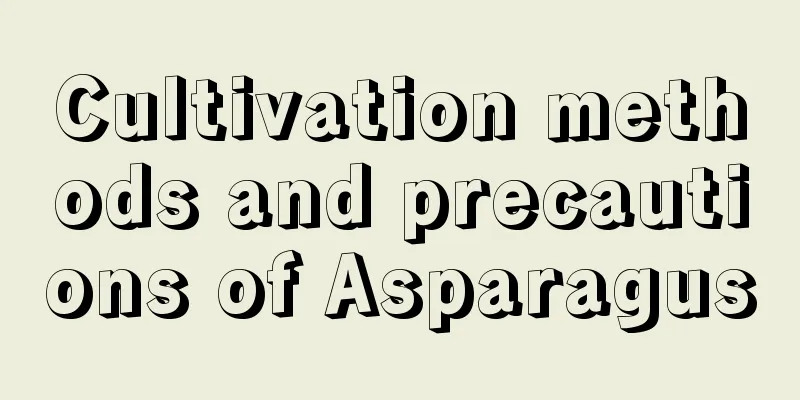Cultivation methods and precautions of Asparagus

Soil requirementsIt likes warm and humid environment, likes sunlight, tolerates partial shade, and is afraid of direct sunlight. It prefers loose, fertile, well-drained sandy loam. In the north, the asparagus cultivation is usually repotted in mid-to-late April. When repotting, cut off some old roots and add culture soil prepared by mixing 4 parts of leaf mold, 4 parts of garden soil, and 2 parts of river sand. Watering methodWater thoroughly every 2 to 3 days in spring. If the air is dry at this time, you need to spray water on the plants every day and sprinkle water on the ground around the maintenance place; in autumn, spray water every 2 to 3 days to increase the air humidity. Asparagus has fleshy roots and is afraid of waterlogging, so do not water it too much under normal circumstances; water it thoroughly once a day in summer. Fertilization methodMay to September is its vigorous growth period, and decomposed cake fertilizer water can be applied every 15 to 20 days. If there is insufficient light indoors, it should be placed outdoors for maintenance for a period of time in spring and autumn; in winter, place it in a place with sufficient light indoors, the room temperature should be kept above 5°C, water it every 10 to 15 days, and spray the branches and leaves every 3 to 5 days. Reproduction methodAsparagus is mostly propagated by division, which can be done in conjunction with spring repotting. The mother plant should be more than 3 years old. When dividing, take the mother plant out of the pot and divide it according to the size of the plant cluster. Plant in several pots, water thoroughly, and place in semi-shade for 10-15 days. The seeds will mature at the end of December. After picking, soak them in water, rub off the peel, and dry them in the sun. Sow in spring, the indoor temperature should not be lower than 15℃, and it will germinate in one month. When the seedlings are about 4-5 cm long, they can be transplanted, with several plants in each pot. |
>>: Cultivation methods and precautions of heart-leaf ball orchid
Recommend
How to make cuttings of Begonia take root quickly?
Many of you probably know about Begonia, and ther...
Purple sweet potato growth environment conditions and characteristics
Purple sweet potato growth environment conditions...
What should I do if azalea "drops leaves"? If you do these 5 things, every pot of flowers will be full of flowers!
If we talk about the most popular flowers in autu...
When is the best season to plant cherries?
Cherry planting season and time The planting time...
How to prune Rieger Begonia
1. Is pruning necessary? Pruning is very importan...
How to care for the kiwi tree in winter and what to do if the leaves fall off
1. How to keep it in winter 1. Light: The genus E...
What are the cultivation methods and precautions for oranges?
Orange cultivation method Orange belongs to the R...
Difference Between Hyacinth and Onion
1. Different types Hyacinth is a perennial herbac...
Calla lily cultivation methods and precautions
Calla lily , also known as water lily, water taro...
Magnolia growth environment conditions and characteristics
Magnolia growth environment conditions and requir...
Why doesn't the osmanthus tree bloom?
1. Unsuitable soil It grows more suitably in sand...
Shrub growth conditions and characteristics
Bush growth conditions Shrubs are generally more ...
Carp breeding technology and fish pond management
Carp has tender meat, delicious taste and rich nu...
When does the pomegranate flower bloom?
When do pomegranates bloom? The pomegranate flowe...
How to grow big green radish to make it more vigorous
Overview of the cultivation of green radish The n...









